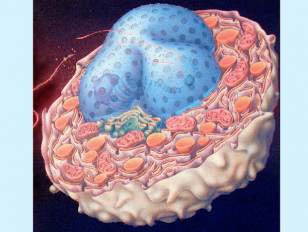Membrane Proteins: Importance, Functions, Mechanisms

Presenter: Hartmut Michel
Published: July 2014
Age: 18-22 and upwards
Views: 1565 views
Tags: membrane;protein
Type: Lectures
Source/institution: Lindau-Nobel
Watch now
Biological membranes define and compartmentalize the cells of higher organisms. Consisting of membrane proteins and lipids, they are basically impermeable for ions and polar substances, so that electric voltages (_membrane potentialsî) and substance gradients across membranes can be generated and maintained. Thus membranes form barriers, and information and substances have to be transferred across these membranes. Compared to membrane lipids, membrane proteins are more active players in biological membranes. They catalyze: (i) transmembrane transport, for example, specific uptake of nutrients and substrates, exchange of ions, and excretion of waste products and extracellular proteins across biological membranes; (ii) biological electron transfer and energy conservation in photosynthesis and respiration; (iii) signal reception, signal transduction across the membrane and amplification; (iv) enzymatic reactions with preferentially hydrophobic substrates. It is our aim to understand the function of membrane proteins and their mechanism of action. In addition, most drugs available to treat diseases act by inhibiting or activating a certain membrane protein. Therefore determining structure of membrane proteins is extremely interesting for drug design and virtual screening. However, membrane proteins are difficult to study because of material limitations caused by insufficient availability of membrane proteins and their instability. At present, the atomic structures of approximately 440 membrane proteins are known compared to tens of thousands of water soluble proteins. Moreover, the structures of only 30 human membrane proteins (of about 6000 to 8000) have been determined. Methods of membrane protein structure determination as well as several recent successes of the author’s lab with membrane proteins of potential medical interest, will be presented.




